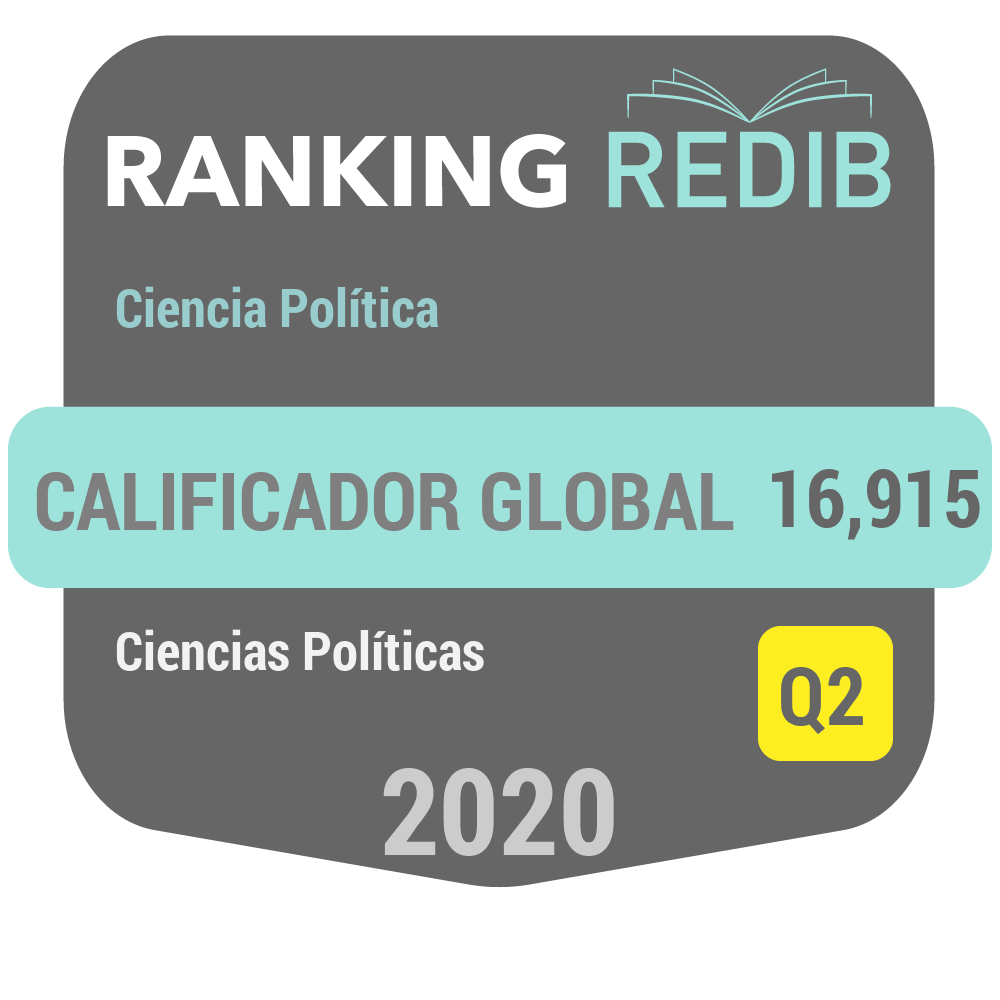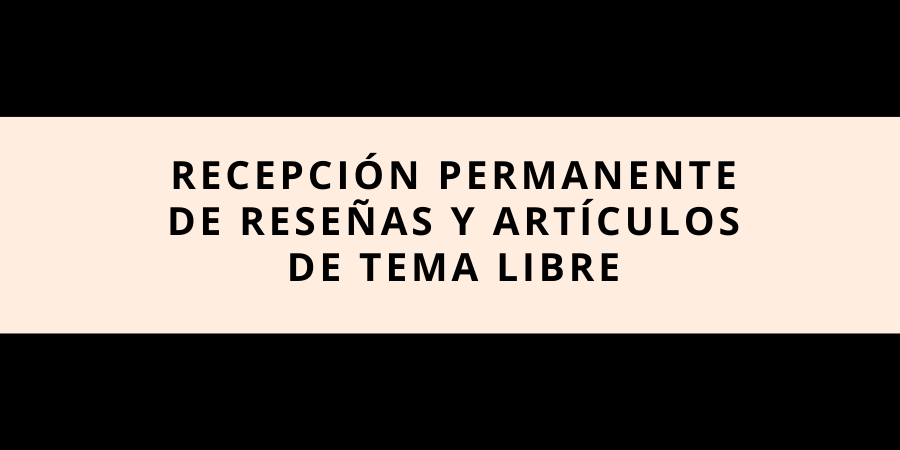Submissions
Submission Preparation Checklist
As part of the submission process, authors are required to check off their submission's compliance with all of the following items, and submissions may be returned to authors that do not adhere to these guidelines.- The submission format is Microsoft Word (we do not accept PDF) and comply with the criteria available in Rules for authors.
- The submission neither has not been published yet nor has been sent to another journal (we remind you tha we can use Turnitin tool to confirm the text originality)
- The first pages of the document contains: title in Spanish and English, information of the authors (email and academic affiliation), abstract in Spanish and English, keywords in Spanish and English separated by semicolons. In addition, at the end it contains a list of references cited in APA. If it is a review, it must not have an abstract or keywords, but the title must correspond to the APA citation of the book reviewed.
- In case of approval, you agree we hold the rights of the first publication of your article and with the terms of 2.5 Colombian Creative Commons Licence. In case of rejection, you agree that Ciencia Política file your article in its historical memory archives only with the porpouse of store it and nothing else.
Section Policies
Tema Central
En el "Tema Central" de la revista Ciencia Política incluye artículos relacionados con un tema específico elegido previamente por el Comité Editorial. Normalmente se realiza una convocatoria con información concreta sobre el tema de esta sección. Dicha convoctoria puede ser encontrada en la sección "Avisos" de este portal.
Otras Investigaciones
Esta sección recoge todo tipo de artículos de investigación relacionados con las ciencias políticas. La convocatoria para la recepción de estos textos es permanente. Recibimos artículos todo el año y los agendamos según nuestro cronograma de publicación. Esta sección es mejor conocida como la sección "misecélanea" de la revista, porque incluye un gran espectro de investigaciones.
Traducciones
Las traducciones deben tener la autorización del autor del texto original o de la casa editorial que lo publicó. Esta autorización se debe hacer explícita, pues se publicará en un pie de página del documento. Sin importar cuál es el sistema de citación orginal, las traducciones deben ajustarse a las normas APA. También es necesario que se consignen todos los datos bibliográficos pertinentes del texto original.
Recensiones
Esta sección recibe reseñas, artículos cortos, comentarios de textos, memoriales, homenjaes y demás textos de corta extensión que no hayan sido publicados previamente. Estos documentos no deben superar las 2500 palabras, deben estar en fuente Times New Roman, tamaño 12 a espacio sencillo.
La reseña debe llevar por título los datos bibliográficos del libro reseñado en formato APA, lo que implica que se debe incluir: nombres de los autores del texto reseñado, año de publicación, título, ciudad, casa editorial y el número de páginas totales. Los autores o autoras de las reseñas deben consignar su nombre completo, correo institucional y filiación institucional reciente en un pie de página anclado a su nombre.
Tenga en cuenta que la revista Ciencia Política solo recibe reseñas de libros que no sobrepasen uno o dos años de anterioridad al número de la revista a la que se postulan. Se apreciarán las reseñas más recientes.
Los comentarios de texto, memoriales, homenajes y demás, también deben citar las referencias que empleen siguiendo las normas APA. Se apreciarán los textos que tengan más relación con las temáticas centrales de los números a publicar.
Se considera artículo corto un texto igual o menor a las 4 000 palabras en el que se discute de forma crítica y coherente un tema o autor. Estos artículos suelen contar con una bibliografía corta y suelen ser una reflexión divulgativa sobre cuestiones actuales o de larga tradición. No se evaluan por pares, pero sí son revisados por el Comité Editorial. Deben ser inéditos.
Copyright Notice
CP holds the rights to the first publication of the manuscript. This means that it cannot have been published prior the submission. Be aware that CP is going to ask you to sign the "Intelectual Property and Conflict of Interest Statement". However, pre-prints that are part of an author's website or part of an institutional repository (such as the thesis repository of Universidad Nacional de Colombia) are not considered as prior publication. Even though, we advise to inform if the article is a derivation of a thesis or a previous unpublished manuscript and to indicate the link or DOI, if it has one.
According to the Creative Commons Attribution-NonCommercial-NoDerivs 2.5 Colombia License you are allowed to share, copy and redistribute the material in any medium or format, under the condition of giving “appropriate credit, provide a link to the license, and indicate if changes were made.”





















